The simple guide to drilling a hole in natural stone
03.2022
Drilling a hole in natural stone doesn’t have to be difficult, but you do need to follow some simple steps. Discover the perfect technique with our easy guide
How to drill a perfect hole in natural stone
Among the many questions we are often asked, one of those is how to drill a perfect hole in natural stone, for example if you need to put up a shelf or picture on a wall clad in stone tiles.
There is no need to be stressed, because although it is exceptionally hardwearing, sculptors and craftspeople have managed to create complex and immortal works of art from it for centuries, often armed with only the simplest of tools such as a chisel or rasp. That said, it is a precious material and does require a little attention so that you avoid unsightly scratches or chips.
We have put together a series of practical tips designed to guide you through the process of drilling a hole in marble or other natural stones without causing damage either to yourself or the stone. On that note, we would also strongly suggest that you always wear protective gloves, a mask and safety goggles to reduce any risk of injury.

The tools you need to drill natural stone
To start with, let’s take a look at the most effective tools for drilling natural stone. We begin with the simple drill, and at this point we would recommend avoiding a hammer drill as its movements risk causing microscopic fractures to a stone surface. The ideal tool is a drill that includes a screwdriver function as it will give you more control over the hole as you drill it.
The next step is to choose the right drill bit and here you want to choose a diamond bit as its strength and resistance will deliver the best performance on a high-quality material such as natural stone.
For a really professional job, you should also use a drilling guide or jig to help hold the point in place. This gets attached to the drill and is useful in creating a clean, precise hole of the exact dimensions you need.
If you do not have the correct tools or are not experienced in drilling, we would always advise getting in a professional builder or tradesperson.
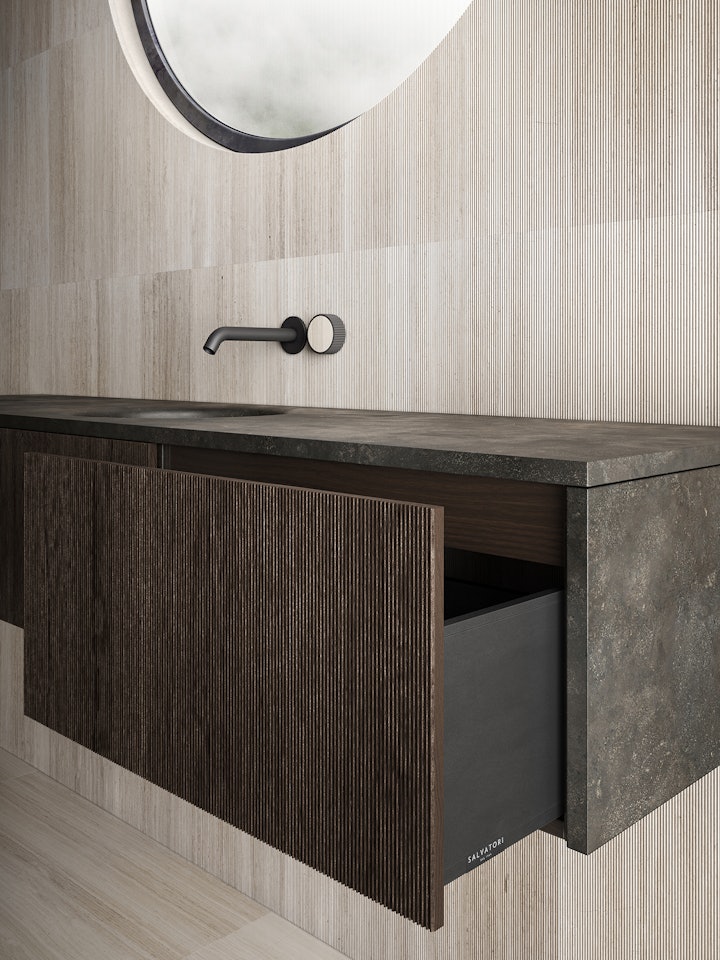
4 tips to reduce damage when drilling a hole in stone
Drilling natural stone does carry a slight risk, as the material can become scratched, chipped or even cracked. The good news is, however, that there are a few tricks to reduce the likelihood of damage and ensure none of these happen:
- Scratch the surface
- Dampen the surface you are working on
- Avoid drilling into any hairline cracks or fossil-like elements of the stone
- Maintain a safety margin of at least 8 mm from the edges of a tile or piece of stone
As we have already said, using a drill jig or guide is always advisable, but if this is not possible, or if the surface is particularly smooth or slippery, scratch or scrape the point where the drill will enter to roughen it up and reduce the chance that the drill bit will skid.
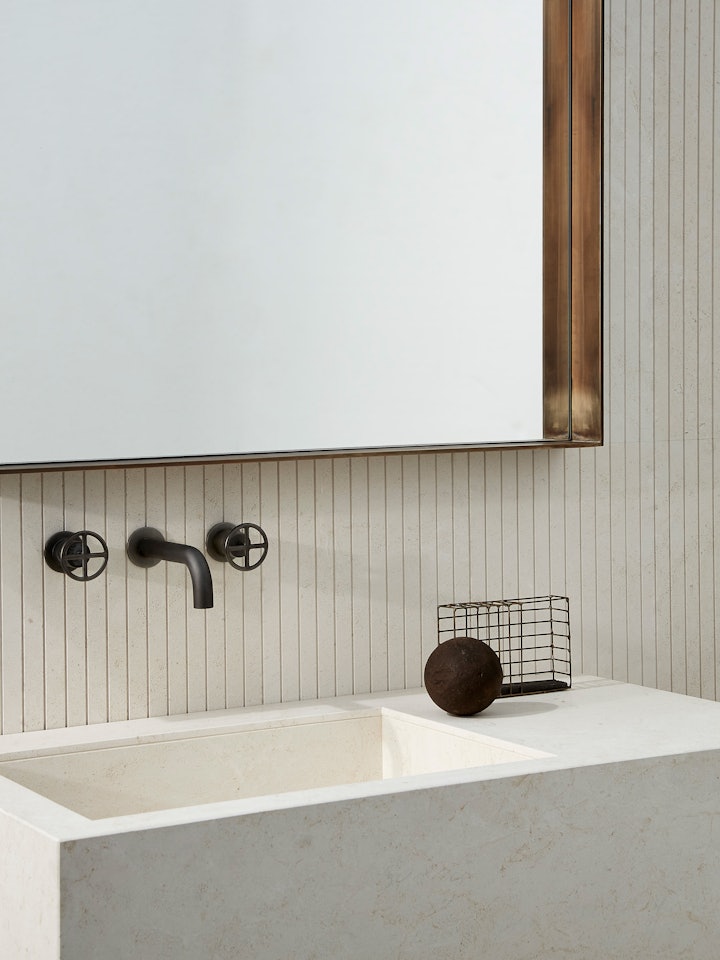
To further reduce the likelihood of any damage to the stone itself, make sure the drill bit does not overheat. The easy solution is to use water on it or on the area you are drilling, as this will decrease the amount of friction and lower the temperature. Doing this has another benefit, as the use of water also reduces the amount of dust produced, making the entire operation cleaner and easier.
By nature, stone will inevitably contain tiny inclusions such as fossilised fragments, or even tiny fractures and the area directly around these may be slightly more fragile and likely to chip or crack, so keep an eye out for these and try to avoid drilling directly into them.
The final tip to reduce the risk of damage if you are drilling a hole into natural stone is to avoid the edges as these will almost always be more prone to chipping or splitting. We recommend you leave a margin of at least 8 mm, creating a “no drill” zone.
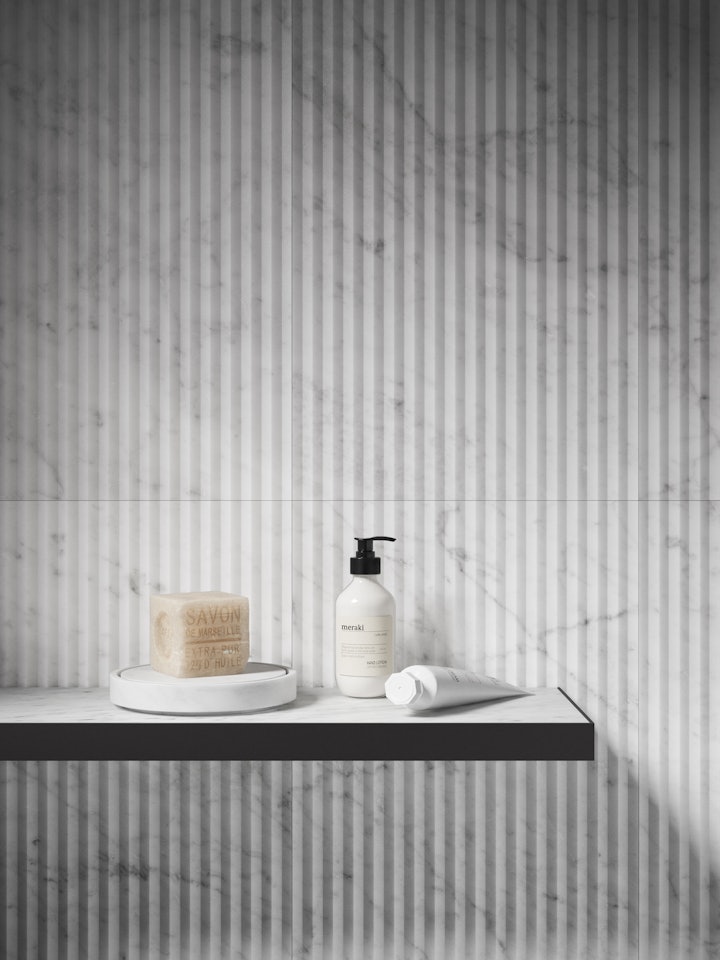
Techniques for drilling a hole in natural stone
Moving on, let’s look at some key techniques to help create a perfect hole.
Regardless of the size of the hole you are drilling, you should start with a bit with a relatively small diameter. To avoid chipping or splitting the stone, the recommended technique is to position the drill bit at a 90-degree angle and start slowly, then gradually up the speed once it has penetrated the stone.
The idea is to then replace the bit with a slightly larger diameter and make your way up through the dimensions as needed. Make the first incision with a small bit, then enlarge it with a slightly bigger one. It is a gradual approach that allows you to create the exact size hole you want, rather than risk making one that is too large, and then having to try and rectify the problem.
The other essential element here is patience. Don’t rush, because slowly building up the pressure and speed of the drill is key to avoiding any damage to the stone. A measured approach allows you to constantly check how you are going, and of course, always check you have a firm hold on the drill and that it is pointed straight rather than on an angle.
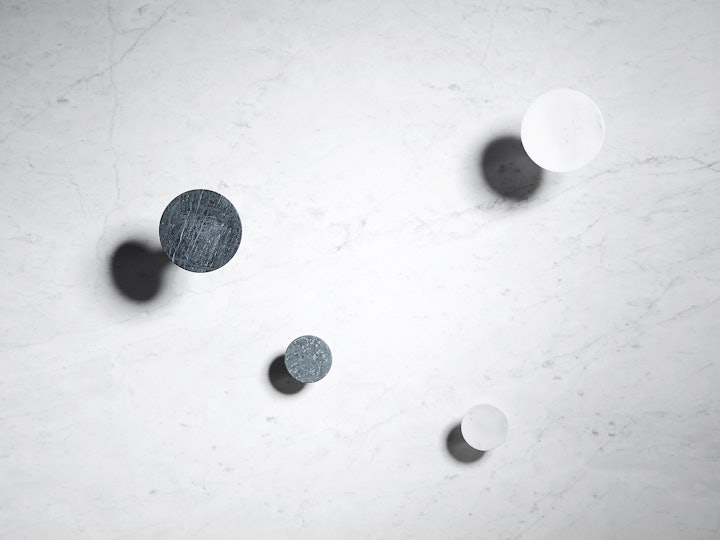
Choose the most suitable part of the stone to drill
You should also identify the best zones to drill any natural stone surface, whether it is tiled or made up of a single slab. As strong as they are, from a structural point of view, stones such as marble, travertine and limestone are made up of a host of different elements such as clay, loam, sand, flint and iron oxides.
While this is part of stone’s intrinsic beauty, it does make it a little tricky to work with as you are having to deal with two contradictory characteristics, ie toughness and fragility. This is the reason diamond drill bits are always recommended, as they are made of one of the very few materials in existence that can cut through natural stone without ruining it.
Yes, stone is tough, but it is also surprisingly delicate which is why we recommend you carefully follow the guidelines we have suggested.
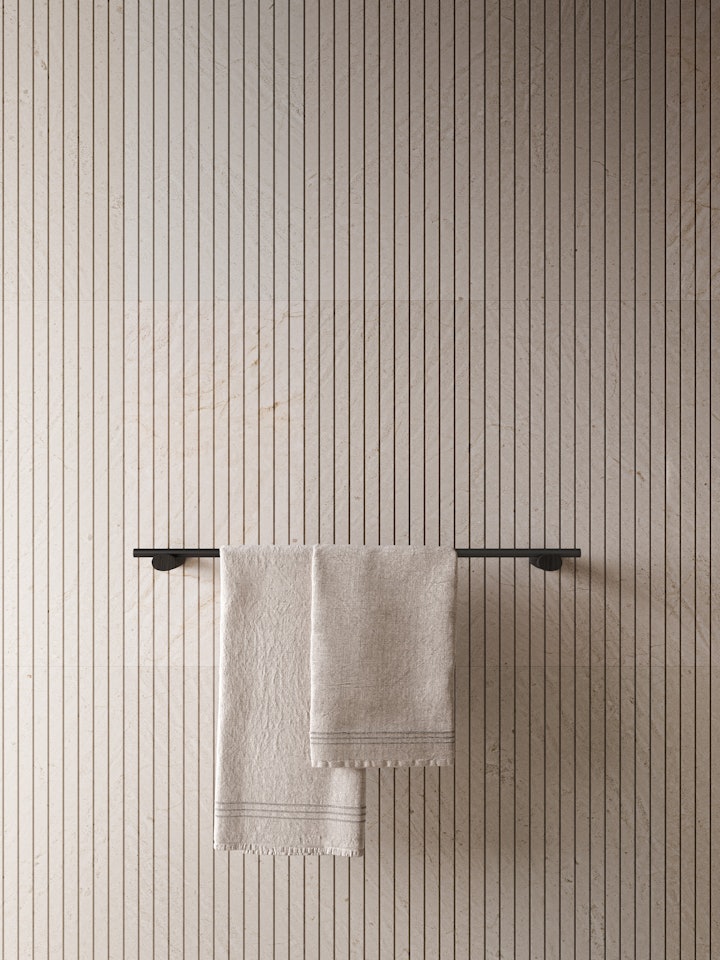
How to protect the stone you are drilling
As we have seen, although the instruction “drill a hole” sounds simple, if that hole is in natural stone, it requires a little additional preparation and attention. One final piece of advice, therefore, is to protect the surface being drilled.
We have already talked about wetting the drill bit to reduce friction and the amount of dust, but you can further lessen the mess and inconvenience of the latter, which by the way, can dull or stain the stone if it is not removed promptly by using a special type of vacuum. This is attached to the drill and collects the residue and dust before it has a chance to settle on the stone surface.
You can also protect the surface simply by applying masking tape in the area immediately around the hole so that if the drill bit slips or skids, it won’t scratch the surface.
If you are drilling into a large, thin tile, ensure that it is placed on a solid support, as if you apply too much pressure and it is not supported underneath, you may risk it breaking in two.
